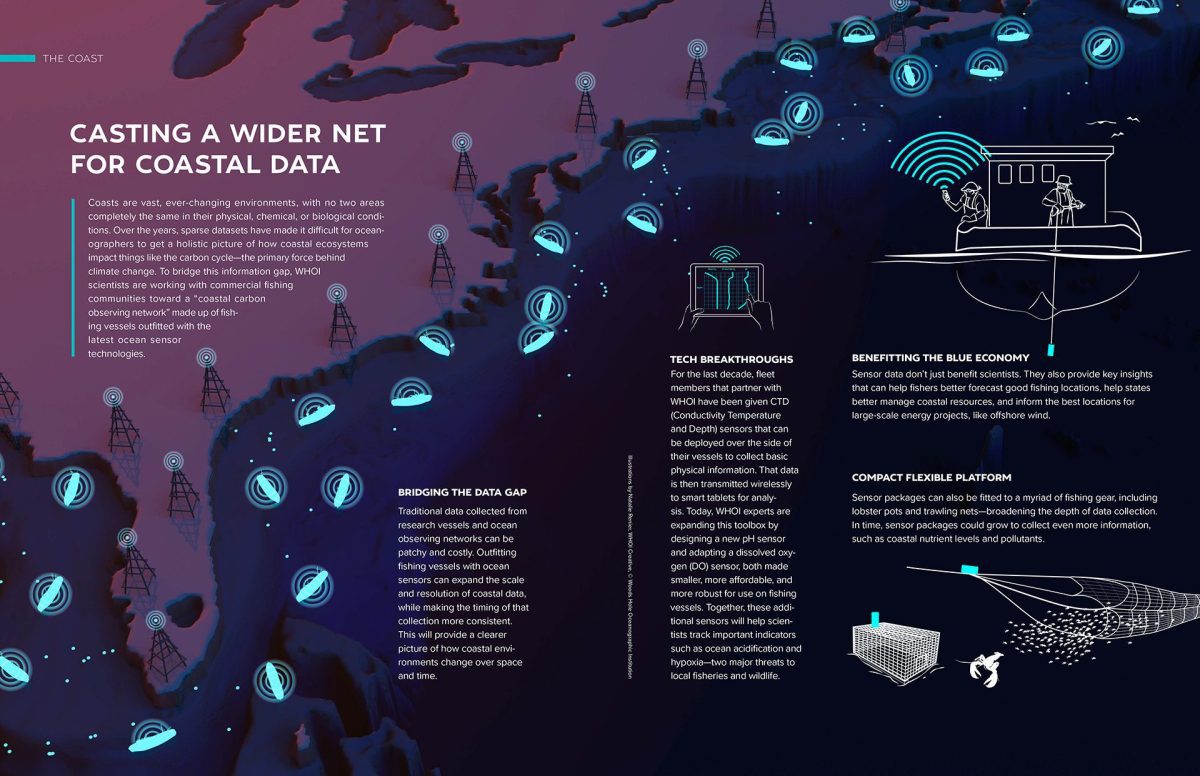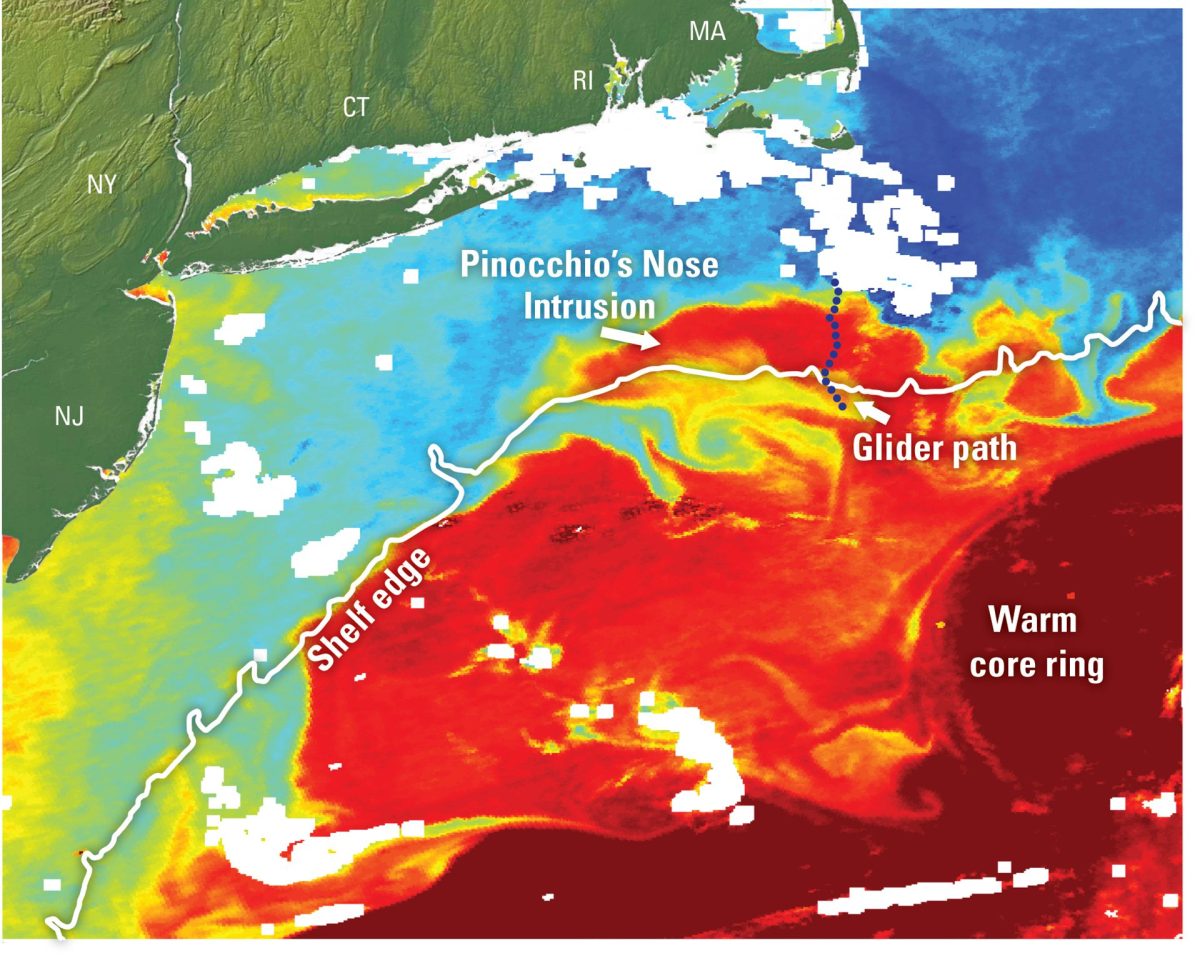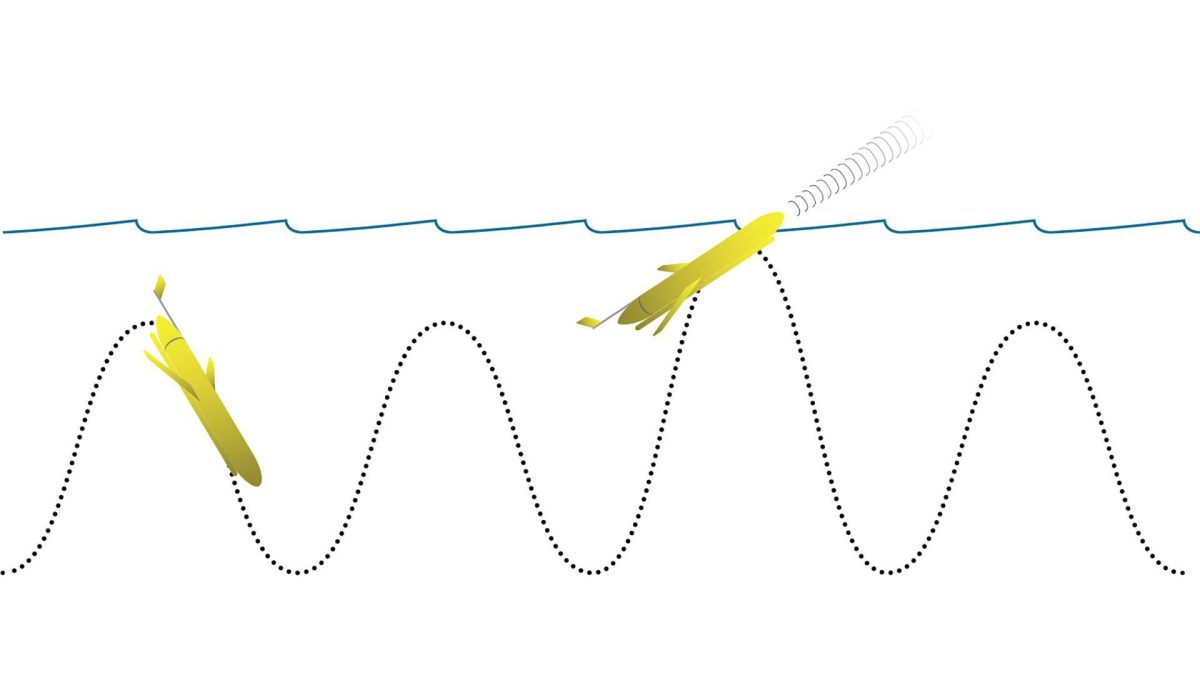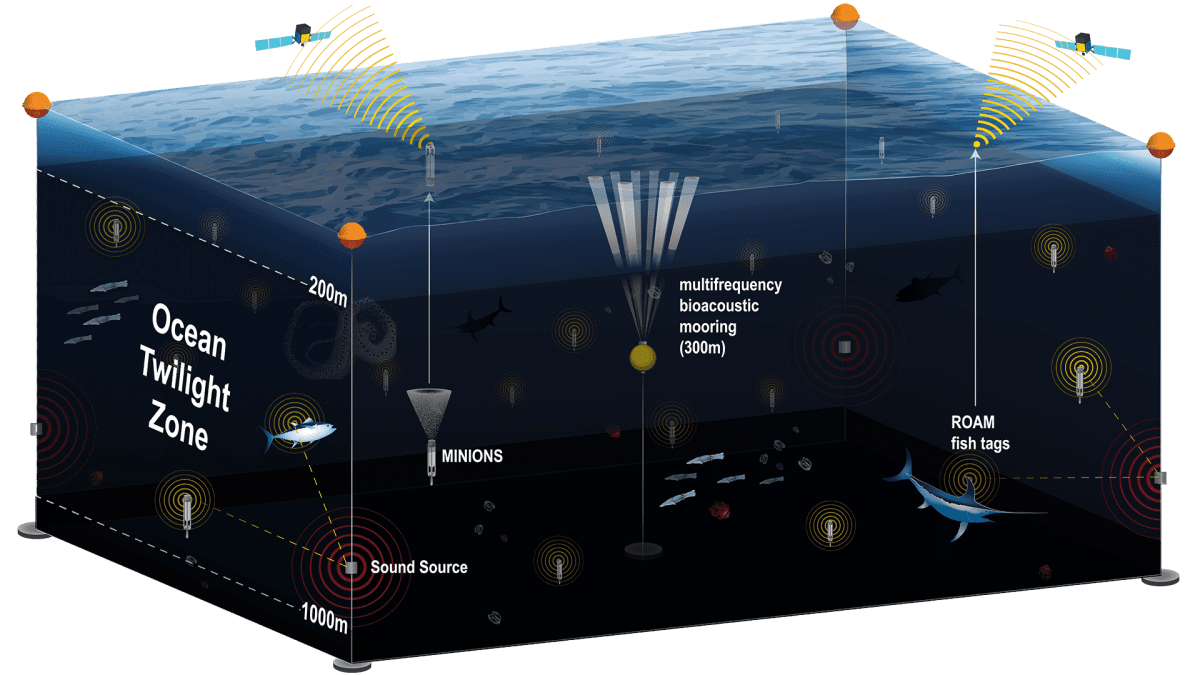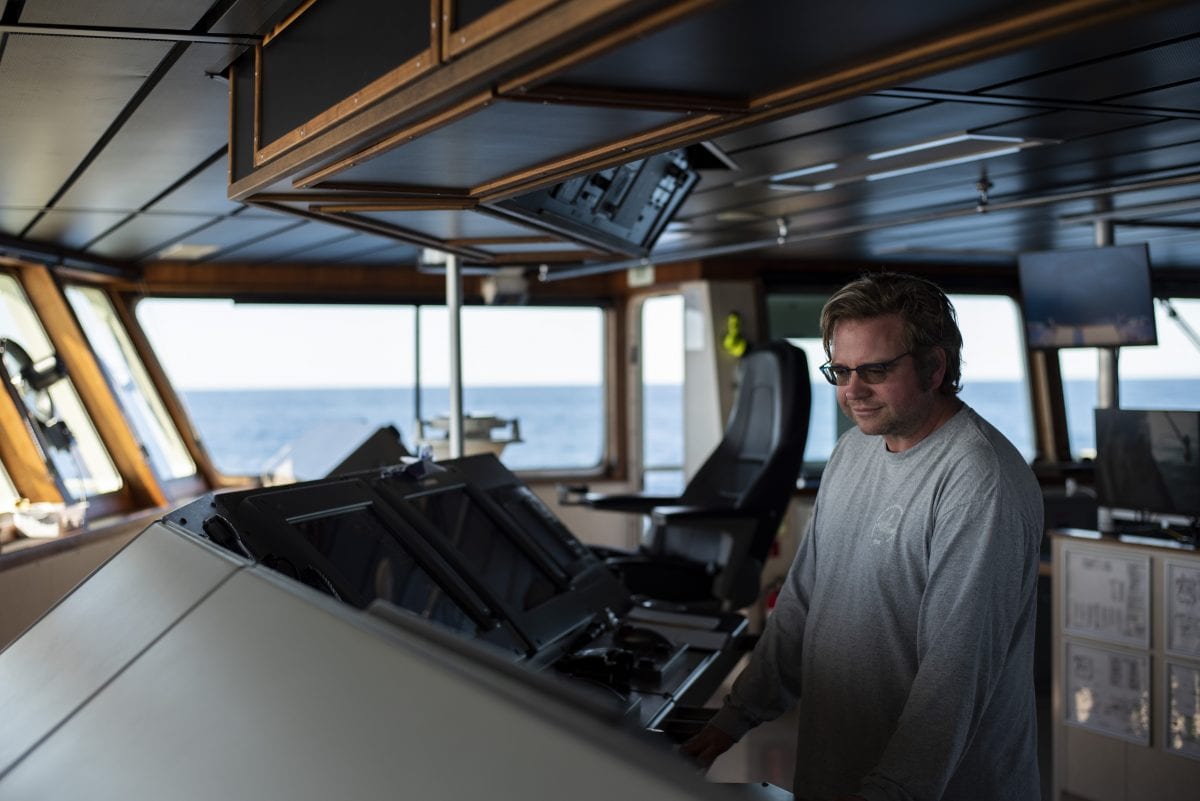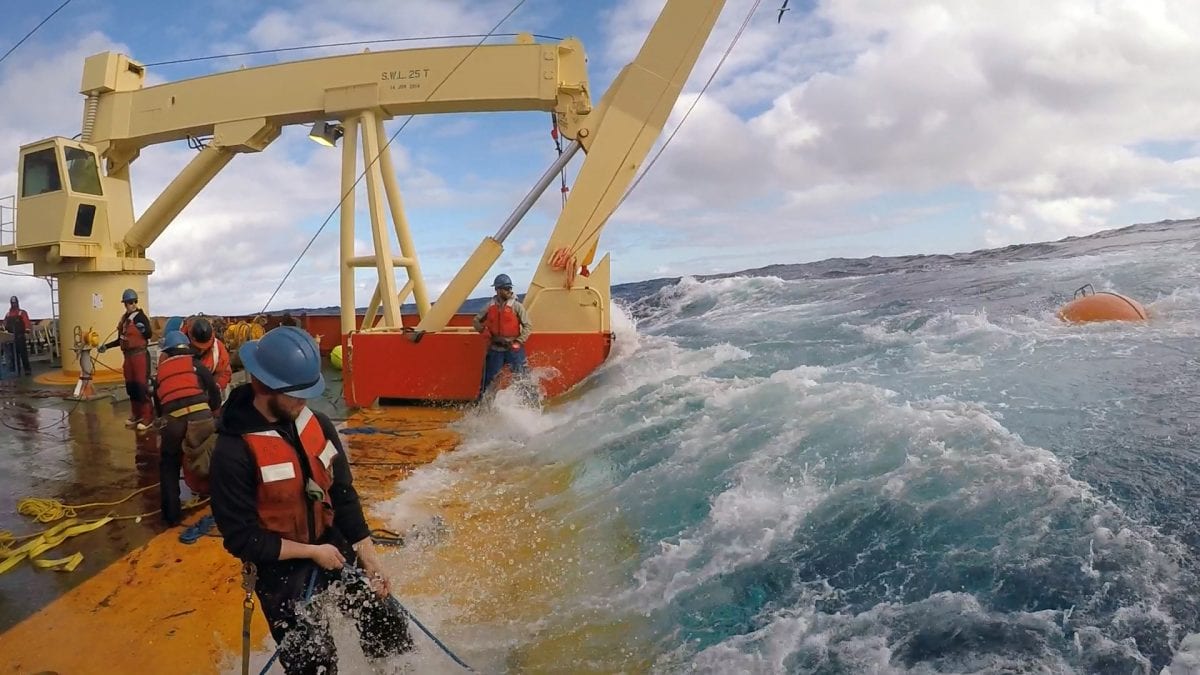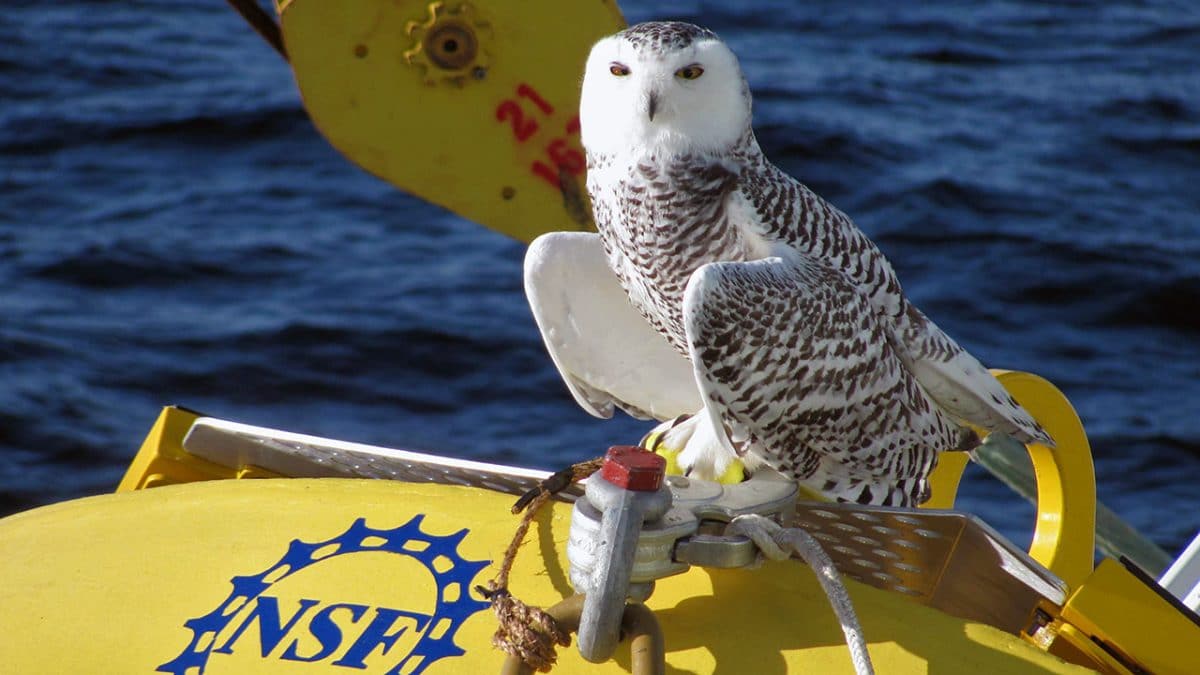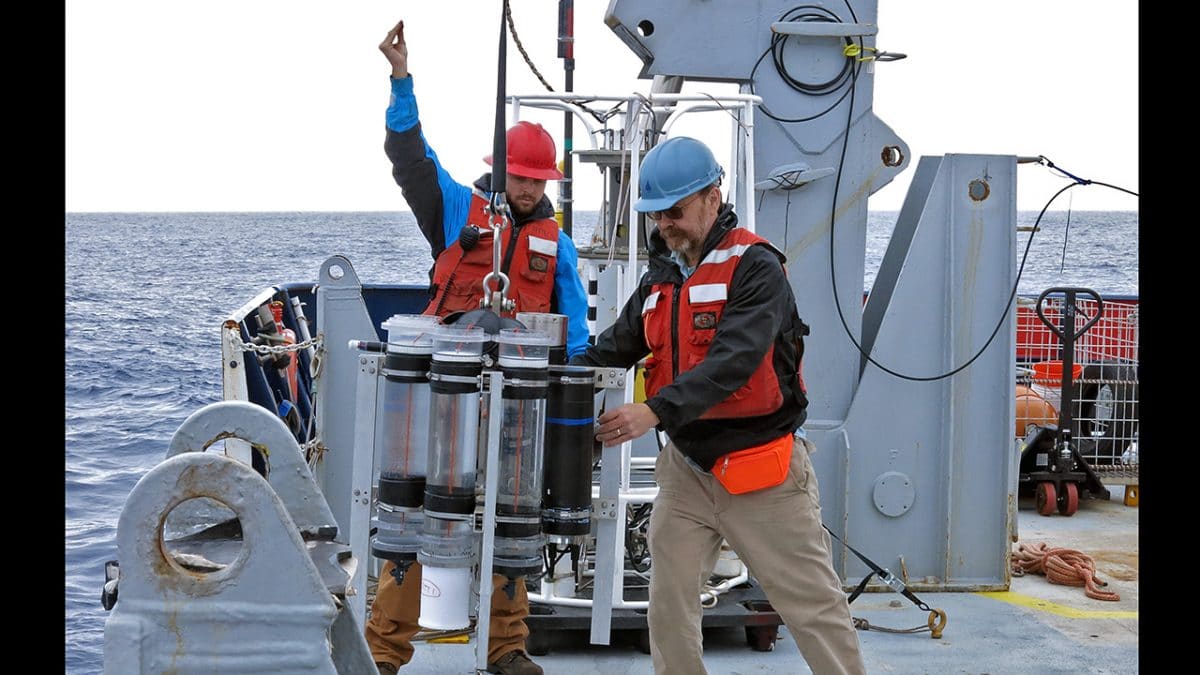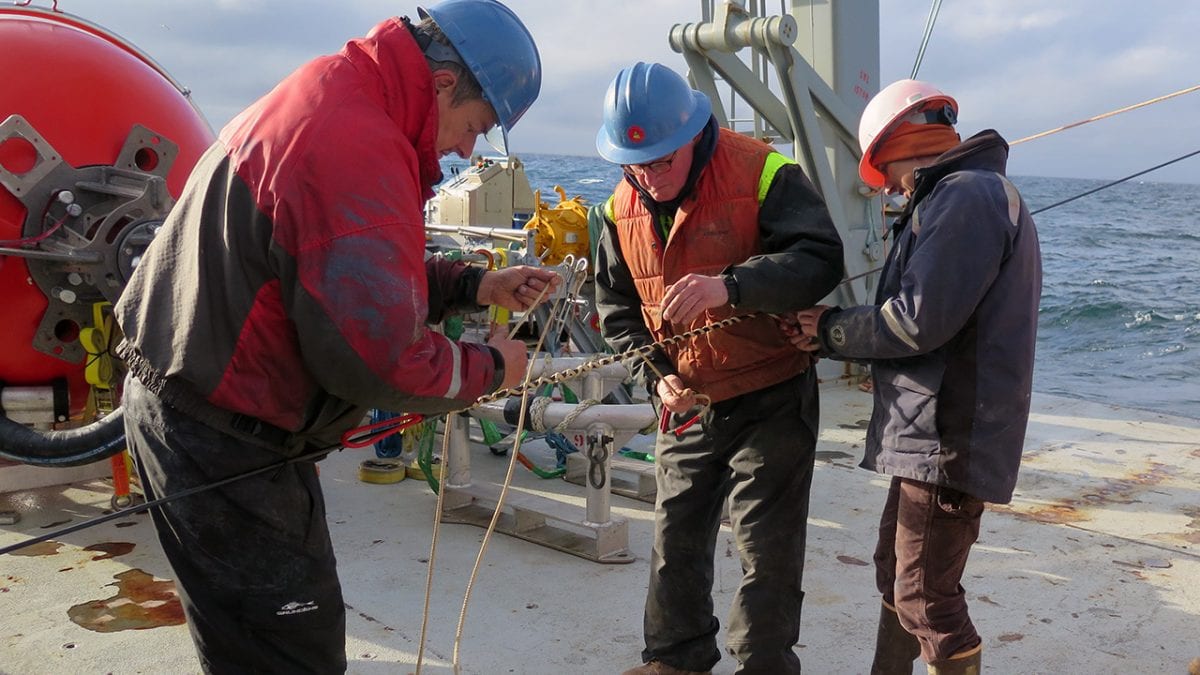In this section
Ocean Topics
- Climate & Weather
- How the Ocean Works
- Ocean & Human Lives
- Ocean Life
- Sustainable Ocean
- Ocean Tech
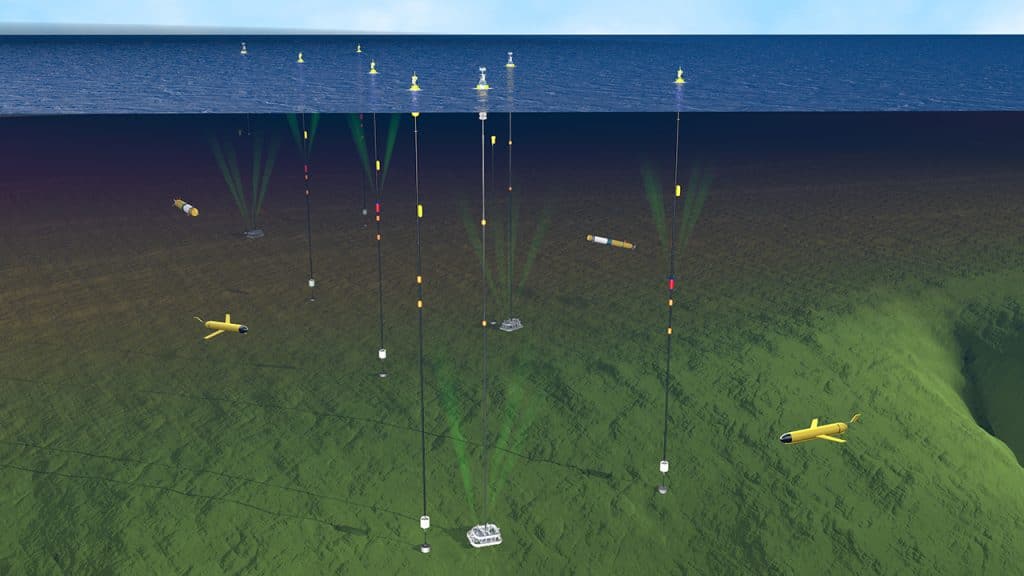
The Pioneer Array, part of the US Ocean Observatories Initiative. (Creative Studio, Woods Hole Oceanographic Institution)
Citizens, sailors, and scientists have observed the seas for centuries, first from the shore, then from ships and submersibles, and recently from satellites. Along the way, scientists and engineers learned that they could sometimes leave instruments in the ocean, secured by wires, buoys, weights, and floats. Each new attempt has advanced our understanding of the ocean system and its interaction with the rest of the planet.
The next big leap will take the form of ocean observatories—suites of instruments and sensors with long-term power supplies and permanent communications links that can feed data to scientific laboratories in real-time.
Motivated by advances in computing, telecommunications, and marine architecture, researchers no longer want to just observe the ocean for short periods in small places. They are thinking big—tectonic plate big, ocean basin big, global system big—and long-term.
Ocean observatories are designed to ask fundamental questions about how the planet works. They will use novel technologies and techniques such as satellite communications, acoustic modems, and fiber-optic cables stretching hundreds of miles across the seafloor to ask questions of the planet that cannot be posed by short-term expeditions.
Ocean scientists plan to maintain their observations over months and years to study how the Earth, ocean, and atmosphere evolve and interact. They want to ask questions that cross scientific boundaries, such as how ocean chemistry affects biology or how the geology on the seafloor affects the physics of flowing water.
Observatories will allow scientists to adjust their experiments and talk to their instruments from hundreds of miles away in shore-based laboratories. This capability will also allow researchers to share what they learn in real-time with scientific colleagues, policymakers, educators, students, and the public.
Articles Related to Ocean Observatories
From Oceanus Magazine
The little big picture
Navigating new waters
On the Move
From Northern California to Ocean Engineer
In the Ocean Twilight Zone, Life Remains a Mystery
New glider design aims to expand access to ocean science
Gift enables new investments in ocean technologies
Can seismic data mules protect us from the next big one?
Life at the Edge
News Releases
Ocean Observatories Initiative‘s Pioneer Array Relocating to Southern Mid-Atlantic Bight
OSU Assumes Cyberinfrastructure Responsibility for OOI
Establishing World-Class Coral Reef Ecosystem Monitoring in Okinawa
WHOI and Ocean Leadership Select Pro-Oceanus Systems to Provide OOI Instrument Packages
WHOI Sponsors Ocean Observatories Event in New Bedford
News & Insights
Stratus Mooring Q&A
HOV Alvin temporarily halts engineering test dives
Meet the Alvin 6500 Team: Drew Bewley
Ocean science into action
Meet the Alvin 6500 Team: Danik Forsman
Meet the Alvin 6500 Team: Lane Abrams
Meet the Alvin 6500 Team: Francis Elder
Could listening to the deep sea help save it?
WHOI in the News
NCEI and WHOI Begin Research Collaboration
NC coast new home for complex ocean-observing system
Deploying seismometers where they’re needed most
Blue-sea thinking: Technology is transforming the relationship between people and the oceans
Diving drones are mining the ocean depths for data – and they could soon predict the weather
Long-term study examines ocean ecosystems off Vineyard
Ocean Tech Features

Ocean models are mathematical models of ocean properties and circulation, which helps us to better understand the ocean's influence on…
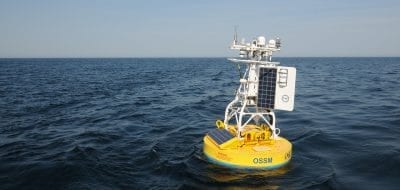
An oceanographic mooring consists of a long cable with an anchor at one end, a float at the other, and…

Oceanographers rely on sophisticated ships to get a firsthand look at the ocean environment and to carry their tools and…

Oceanographic observing tools has grown to include human-occupied submersibles, remote-controlled vehicles, and autonomous robots.

A strong understanding of how sound behaves in different conditions in the ocean helps scientists answer fundamental questions about the…
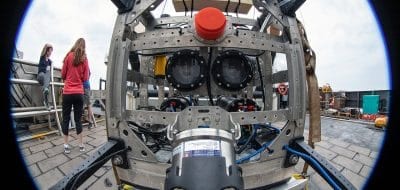
Underwater imaging continues to advance in technology, allowing research to be conducted in the pressure-filled, extreme environments of the ocean.
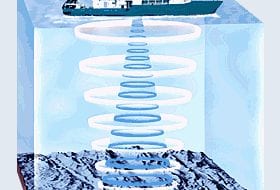
Echo sounding uses sound waves bounced off the ocean bottom to calculate depth. The faster the sound waves return, the…
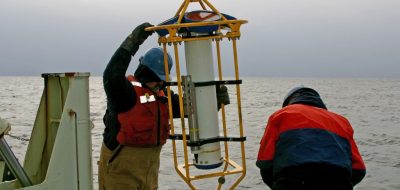
An Acoustic Doppler Current Profiler (ADCP) uses sound waves to measure water current speed at multiple depths, helping scientists study…
Ocean Tech Related Links
Ocean Observatory Initiative
Coastal & Global Scale Nodes
Martha’s Vineyard Coastal Observatory
Coastal & Global Scale Nodes
Palmer Station TSG Observatory
Coastal & Global Scale Nodes

